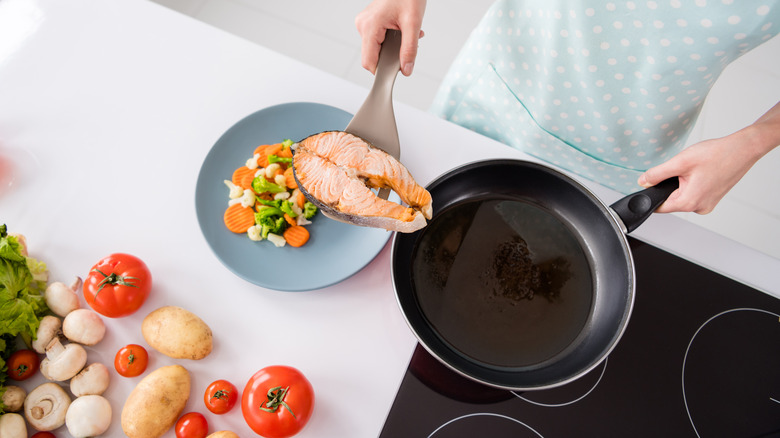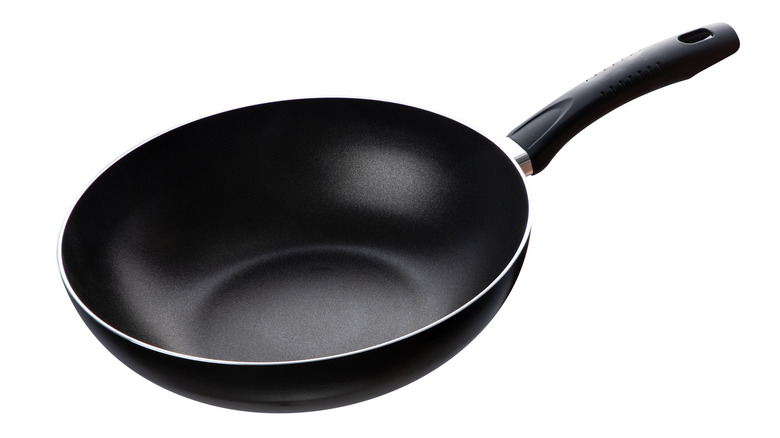You Shouldn't Stack Your Frying Pans On Top Of Each Other. Here's Why
It seems like there are a million rules on frying pan preservation, from making sure you're using the right type of oil on them to cleaning them properly, even using the correct utensils is an important part of maintaining the quality of your frying pans. Cast-iron skillets are designed for oven use, but regular non-stick pans shouldn't be placed in there. There are a lot of rules, but one of the most surprising is the fact that you shouldn't even be stacking your frying pans.
Stacking your frying pans can scratch and damage the nonstick coating on them (via Eat This, Not That!), completely ruining their nonstick abilities and leaving you with food residue that may never come off (we've all been there before, with scrambled eggs that cause the ruin of a perfectly good pan). Nonstick pans can also get scratched and end up chipping. Those of us who don't have enough space in our kitchens to properly store our frying pans may end up stacking them on top of each other in a cabinet somewhere.
Stacking your frying pans can cause damage to them
The best option for storing your pans, according to chef Jacques Pépin and Bruce Mattel, associate dean in food production at Culinary Institute of America (via the New York Times), is to hang your frying pans. Bruce Mattel explains why stacking them isn't a great option: pans become ruined when people will place pans on top of each other after cleaning without thinking about the damage that can be done by metal surfaces scraping against each other. "It's best if you don't stack them," says Mattel, "but if you do, just put a cloth between them." That's why hanging them is preferable and will help extend their lifespan.
Creating a hanging wall for your pots and pans can be done with a pegboard on a wall (via The Kitchn), or by creating a hanging rack for them somewhere in your kitchen (it's recommended to do this on a stud, as pots and pans can quickly add to up be a lot of weight).

